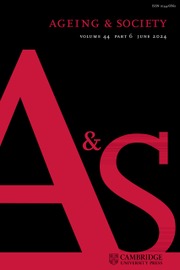Home
Research. Positions. Opinions.
Publications
@ Scientific Reports
Social Perception in Times of COVID-19 Pandemic and its Behavioral Outcomes
Why did some people support the pandemic-related measures across countries, while others did not?
We asked this question with the intention of identifying universal patterns into how social perception of varying people and groups affected people’s decision to adhere to containment measures and get themselves vaccinated.
In a first step we identified what we call a set of key protagonists that were relevant in each of the participating countries. Key protagonists is a general term that refers to specific individuals, or groups of people, or movements, or institutions. Our findings show that heads of state, health physicians, and the protest movement were universally meaningful protagonists across 35 countries.
Then we wanted to know how people evaluated these protagonists in terms of their sociability and competence traits. Findings are displayed in the figure below.
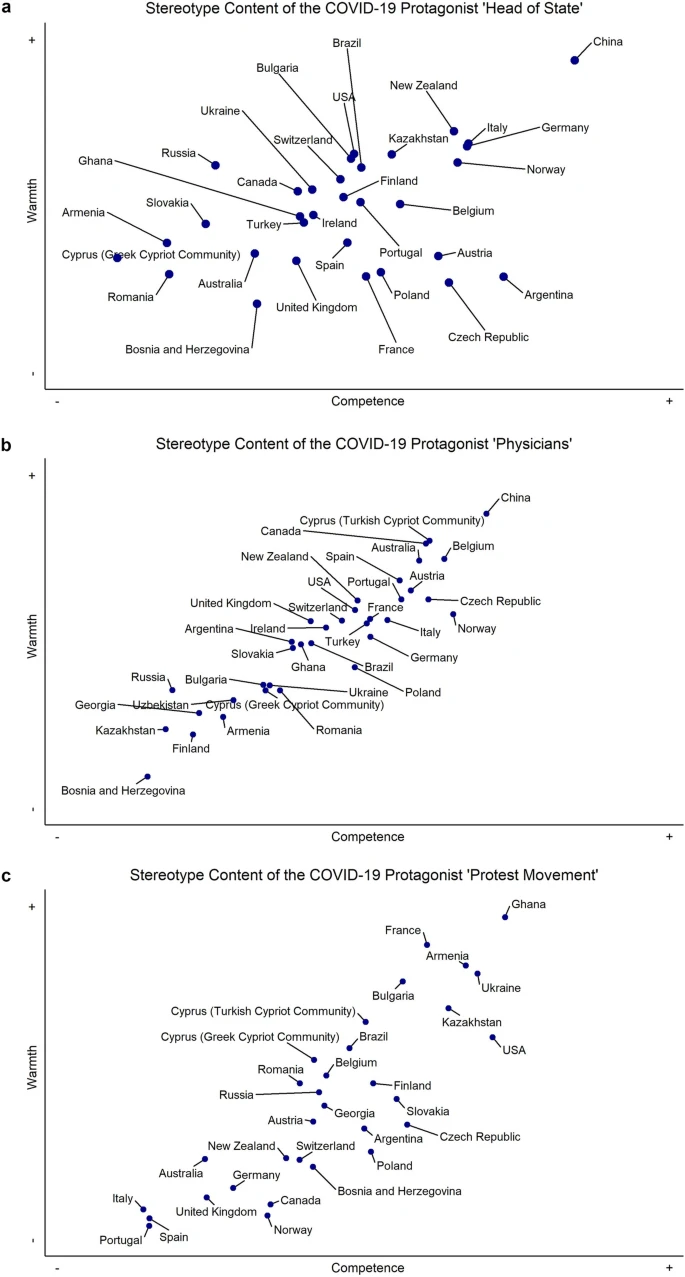
Finally, we looked at how perceptions in terms of sociability and competence were associated with adherence to virus containment measures and willingness to get vaccinated. We are the first to show that high sociability and competence evaluations of protagonists advocating for protective measures (head of state, physicians) were associated with support for health preventative behaviors, such as washing hands, social distancing, and getting vaccinated. High sociability and competence evaluations of protagonists opposed to protective measures (e.g., protest movements) were associated with opposition to the same.
The paper is open access and can be retrieved via this link.
In addition, we prepared an application that can be used to explore into greater details our findings. The app is accessible via this link.
@ Scientific Data
How does psychology vary across human societies?
Paper lead by Cari Pick is now published open access at Scientific Data, a Nature publication.
The paper “Fundamental social motives measured across forty-two cultures in two waves” open access explores how fundamental social motives (like caring for family, maintaining friendships, finding romantic partners, avoiding disease) vary across human societies. Fundamental social motives organize thoughts, feelings, and behaviors to address the most basic aspects of social life: protection from dangerous people, avoiding contagious disease, finding/keeping friends, gaining status, finding/keeping romantic partners, caring for family.
@ IJREPH
Ethnic Stereotype Formation and Its Impact on Sojourner Adaptation
This golden access paper (free for authors and free for readers) asks how do sojourn immigrants having little to no opportunities of contact with local culture experience adaptation processes. We looked at stereotype formation in a sample of Chinese Belt & Road workers in Montenegro.
Adaptation research departs from the assumption that immigrants live in the local host culture and consequently have opportunities to interact with local population.
But, what happens if that is not possible?
Chinese Belt & Road workers are living in own camps and move along the designed path of the to-be-built road. As project progresses, so do sojourners move further away from cities and villages and so they have lesser chances of contact.
We studied what stereotypes did sojourners have about the local population.
Using the stereotype accommodation hypothesis, we expected that there is stereotype formation as a result of information sharing within the sojourner group.
We tested effects due to cultural distance, knowledge of the local culture, and duration of stay in the culture on richness of stereotypical describtions which in turn expected to explain feelings of social exclusion as well as sociocultural adaptation.

We find that a greater amount of stereotypical descriptions (richness of adjectives provided) was negatively associated with social exclusion and positively with sociocultural adaptation. Findings also show that the ability to describe the local people in own’s host culture makes one adapt. And this is seemingly irrelevant whether the description is positive or negative, which is contractictory with the contact hypothesis.
“In conclusion, this study should be seen as a building block in stereotype formation literature that complements the growing number of studies in non-western cultural settings.”
@ IJoP
Stereotype accommodation concerning older people
This golden access publication (free for authors and free for readers) asks the question how do immigrants deal with exposure to cultural beliefs about older people that may be different than those in their cultures of origin.
Do immigrants integrate the new beliefs into preexistent ones?
In two cross-sectional and multi-national studies using European Social Survey (ESS) and world Values Survey (WVS) data, I examine the stereotype accommodation hypothesis (see here) regarding stereotype of older people along dimensions of sociability and competence.
I expect that as a result of cultural learning, immigrants who stay longer in their host socities, are exposed to greater cross-cultural difference in the stereotype of older people, and are open to experience their host culture are more likely to change their stereotype.
I operationalize stereotype accommodation as the degree to which immigrant subjects reproduce the host culture’s old-age stereotypes as opposed to those of the origin culture. That is: the absolute difference btwn meta-belief of individual and the averaged cultural belief.
Findings show that immigrants can reproduce stereotypes about older people in host cultures when the host-country stereotypes are more positive than the stereotypes that prevail in their countries of origin.
However, this is the case only regarding the sociability dimension.
Knowing that immigrants can incorporate the old-age stereotypes that are dominant in their host cultures is a crucial step towards developing strategies for educating immigrants (and populations with a migration background) away from any negative beliefs about older people that had been internalised from their countries of origin and are in contrast with the more positive beliefs that exist in host countries.
Why should this matter: we now become more aware that new avenues for research on ageing in immigrant populations are needed, particularly ones that consider the effects of both origin and host cultural stereotypes about older people.
@ PsyArXiv
Index towards more accurate theoretical predictions in view of available data.
In this paper, we (EH Witte, F Zenker and myself) argue for better ways to evaluate theoretical predictions in research, and become more aware of limitations of effect size measures (Cohen’s d).
We argue for a direct evaluation of a theorized (expected) effect against the empirical (observed) effect. When the ratio between the two is apprx. 1 only then can we be certain that our prediction is adequate in view of data. Here, we introduce the Similarity Index (ISIM) as one way to evaluate this (see formula 1).
\[ I_{SIM} = \frac{|m_{theo} - m_0|}{|m_1 - m_0|} \]
where:
\(m_{theo}\): the theoretically predicted mean;
\(m_1\): the empirically observed mean in the experimental group;
\(m_0\): the empirically observed mean in the control group.
Based on simulation studies (see Rmarkdown here), we develop a similarity interval that can be used as a guideline for the decision a) whether to adjust the theoretical prediction, b) increase the sample size, or c) consider as impractical the expected effect.
Several applications to existent findings in (Social) Psychology are provided. Likewise, we provide a step-by-step guide that researchers can use in immediately applying the Similiarity Index in their work, and also ways of interpreting its coefficients.
@ Ageing & Society
Values of self-transcendence provide motivational force toward the suppression of ageism in young adults.
For this publication I use data of the 4th round of the European Social Survey-ESS- and the 6th round of the World Value Survey-WVS- to examine whether value systems provide motivational force towards suppression or justification of old age ageism among young adults across countries. Study materials open access.
I argue that value preferences of young adults preced any threat perceptions and stereotypes towards older people and as a consequence they impact on young adults’ prejudice and discrimination against older people. Using a multilevel analytical approach, I tested complex mediation models at level-1 of analysis (see Figure 1) and hypothesized that (a) self-transcendence will impact indirectly and negatively ageism levels and (b) self-enhancement will impact indirectly and positively ageism levels.

Findings show evidence across countries for the first hypothesis. Findings also indicate that in non-Western and collectivistic cultures self-enhancement might also contribute to the suppression of ageism in young adults.
The paper proposes a specific new way to combating ageism across cultures, one in which addressing value change in young adults might be more beneficial in the long term than solely focusing on the contact quantity and quality between younger and older members of society.
@ Frontiers
The distribution approach to measuring culture-level values in Shalom Schwartz’s theory.
In this publication at Frontiers in Psychology–Cultural Psychology, we (EH Witte, K Boehnke, and myself) challenge the current state of the art in culture-level value research. We likewise suggest a re-conceptualization of cultural level values along an orthogonal structure defined by dimensions of Alteration/Preservation and Amenability/Dominance.
The paper is an empirically-driven article (uses two rounds of the European Social Survey ESS) that highlights shortcomings of the available approach of arriving at cultural level value preferences from individual level value preferences, the so-called averaging approach. The fictitious middle individual on which the averaging approach is based is, we argue, an improper empirical reproduction at the cultural level of the true value profiles of individuals of a country. As in scale construction, where one must demonstrate that scale-items reliably pertain to one common latent factor, so is the case in constructing a culture-level construct from individual-level observations – one needs to show that there is sufficient homogeneity between value profiles of people in a country before averaging over them to arrive at a culture-level concept. This, however, is not the case in practice. Moreover, we also know from past research that in some cases there are negative correlations between individual-level observations that are otherwise disregarded in the averaging approach. We propose the distribution approach as an alternative.
This method facilitates via an unfolding technique a direct reproduction at the cultural level of the individual level values. Observed value profiles of individual members of a country are compared against theoretical relations of value compatibility-incompatibility (circumplex value model unfolded as ideal value profiles, see Table 1), comparisons which subsequently serve to classify each case into one of eleven value classes, 10 as theorized by Shalom Schwartz and 1 as non-classified.
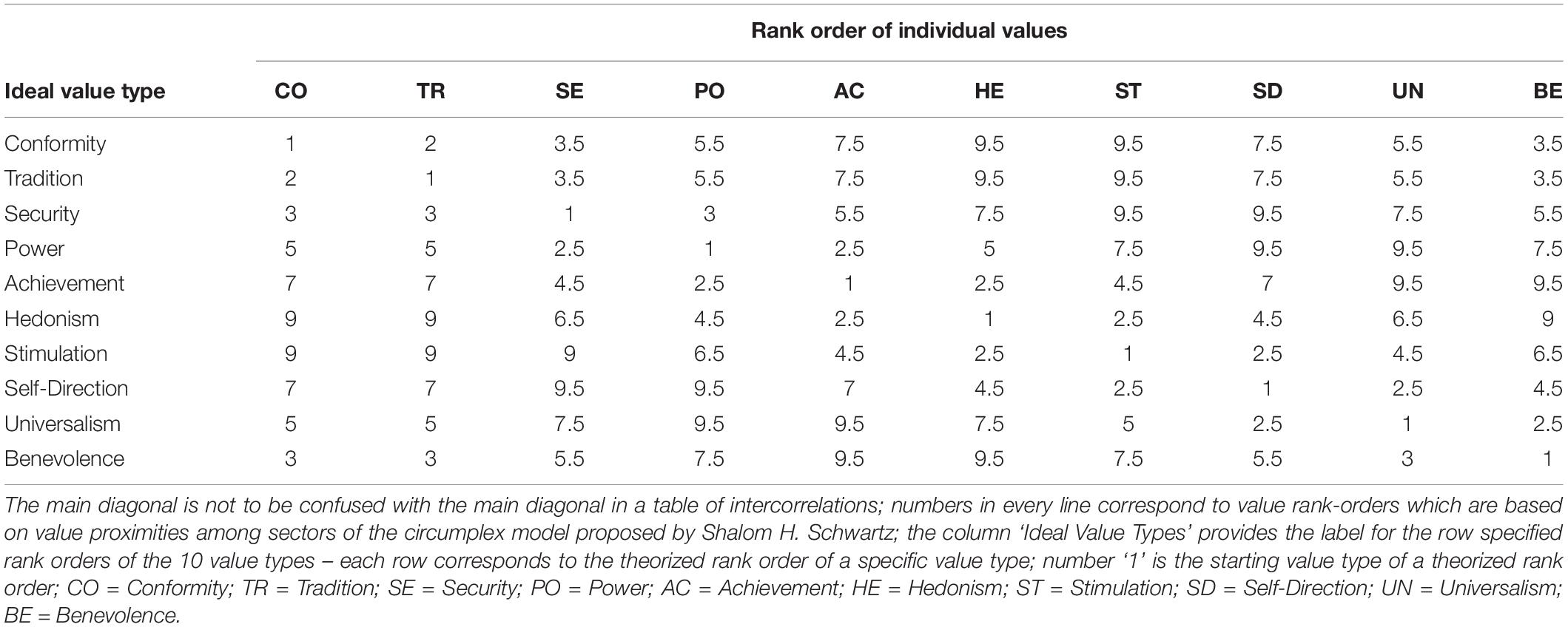
After a value class is assigned to each individual, we calculate frequencies of value classes in each country which are then transformed into rank-orders. Based on the rank-transfored distribution of value profiles we then perform Principal Component Analysis and extract as substantially meaningful two components – two ways in which value profiles of individuals organize collectively at the cultural level (Figure 1).
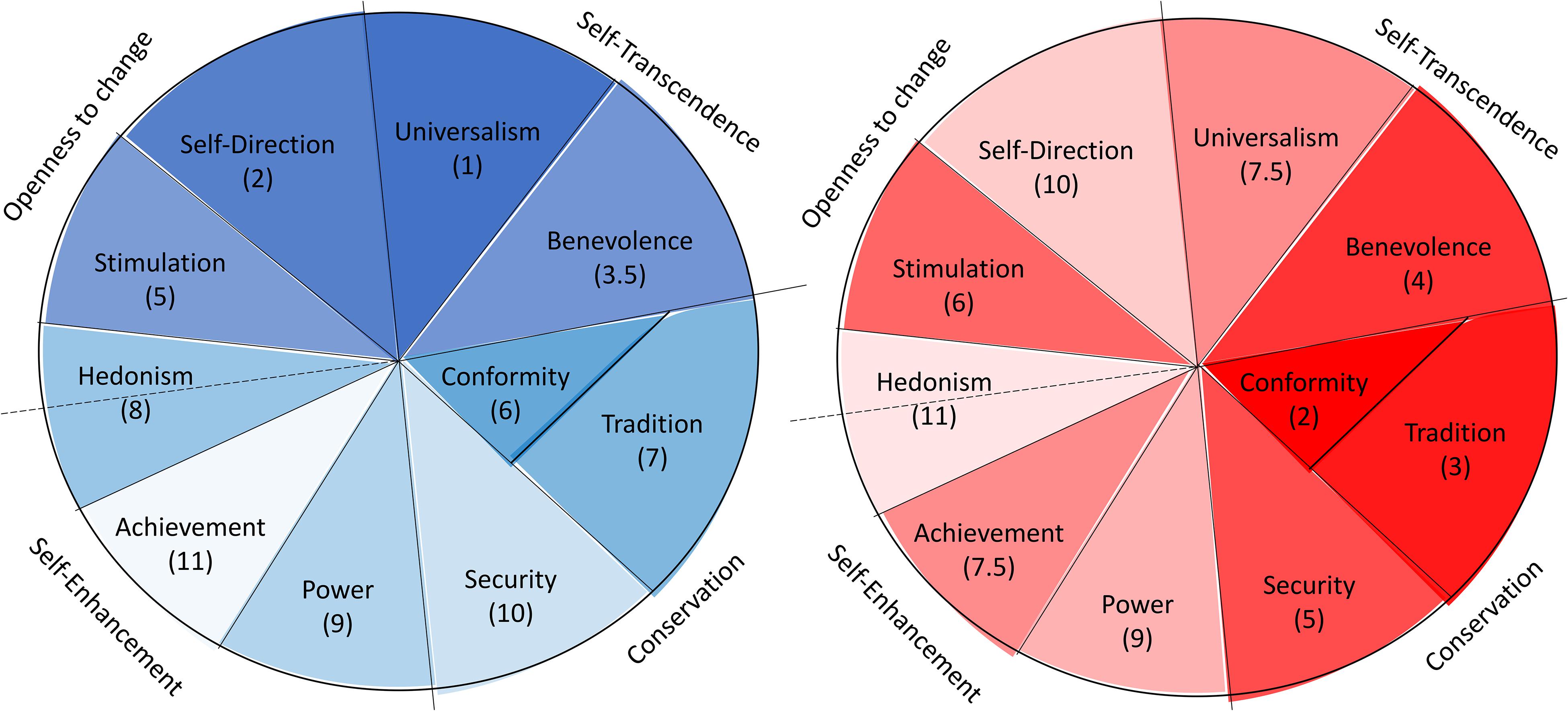
Note. Numbers correspond to value rank order of importance. The stronger emphasized colors correspond to value typologies with a higher weight on the respective dimension. The weaker emphasized colors correspond to value typologies with a lower weight on the respective dimension. To arrive at the value structure of a culture, one requires the weights of the respective culture (factor loadings) on the two dimensions.
Finally, using these two newly found dimensions we can predict each country’s cultural-level value preferences from indices of societal challenges (education, religiosity, ethnic fractionalization, etc.) (Figure 2).
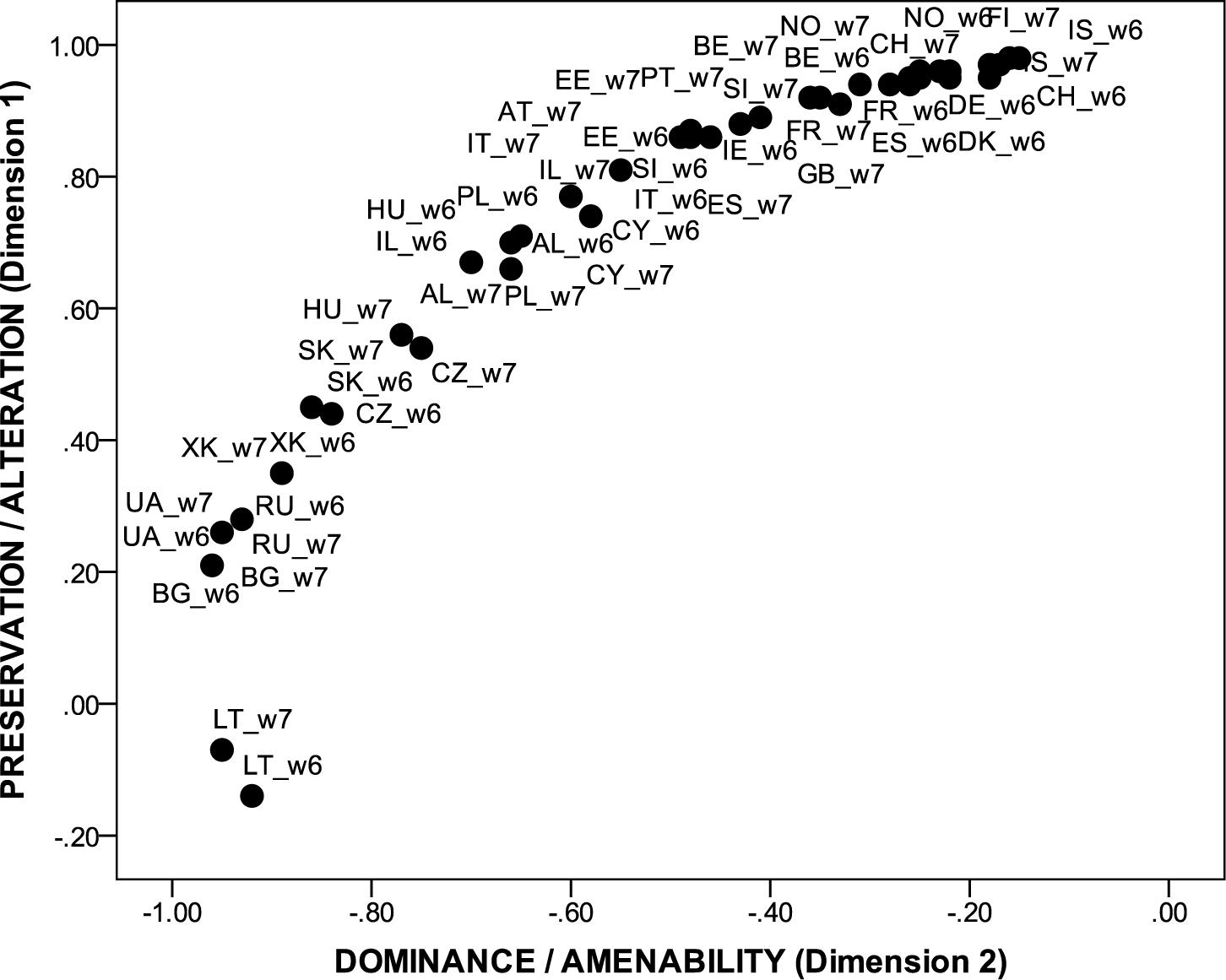
Note. Alteration/Preservation value rank order: (+) Universalism, Self-Direction, Benevolence, and Stimulation vs. Achievement, Security, Power, Hedonism, Traditionalism, and Conformity (‑); Amenability/Dominance reversed value rank order: (+) Self-Direction, Power, Achievement, Universalism, and Stimulation vs. Conformity, Traditionalism, Benevolence, Security, and Hedonism (-); 20 countries were available in both rounds of the ESS, namely: Belgium (BE), Switzerland (CH), Czech Republic (CZ), Germany (DE), Denmark (DK), Estonia (EE), Spain (ES), Finland (FI), France (FR), Great-Britain (GB), Hungary (HU), Israel (IL), Ireland (IE), Lithuania (LT), the Netherlands (NL), Norway (NO), Poland (PL), Portugal (PT), Sweden (SE), and Slovenia (SI), nine countries were available only in Round 6 of the ESS, namely: Albania (AL), Bulgaria (BG), Cyprus (CY), Iceland (IS), Italy (IT), Russian Federation (RU), Slovakia (SK), Ukraine (UA), and Kosovo (XK). One country was only available in Round 7 of the ESS, namely Austria (AT).
@ Perspectives
What motives do people prioritize in their social life?
Abstract
What motives do people prioritize in their social lives? Historically, social psychologists, especially those adopting an evolutionary perspective, have devoted a great deal of research attention to sexual attraction and romantic-partner choice (mate seeking). Research on long-term familial bonds (mate retention and kin care) has been less thoroughly connected to relevant comparative and evolutionary work on other species, and in the case of kin care, these bonds have been less well researched. Examining varied sources of data from 27 societies around the world, we found that people generally view familial motives as primary in importance and mate-seeking motives as relatively low in importance. Compared with other groups, college students, single people, and men place relatively higher emphasis on mate seeking, but even those samples rated kin-care motives as more important. Furthermore, motives linked to long- term familial bonds are positively associated with psychological well-being, but mate-seeking motives are associated with anxiety and depression. We address theoretical and empirical reasons why there has been extensive research on mate seeking and why people prioritize goals related to long-term familial bonds over mating goals. Reallocating relatively greater research effort toward long-term familial relationships would likely yield many interesting new findings relevant to everyday people’s highest social priorities.
Article is open access available here.
@ IJIR
During processes of acculturating to their host countries Romanian immigrants modify their stereotypical beliefs regarding politicians.
Building on the theoretical framework and concept introduced in Stanciu and Vauclair (2018), in this paper we (CM Vauclair, N Rodda, and myself) test the stereotype accommodation hypothesis in samples of Romanian immigrants in Germany and France.
Abstract
Through intercultural contact, immigrants can change the stereotypes they had previously held about the majority ethnic group in their host cultures. Other undocumented processes of socio-cognitive adaptation following migration are also possible; immigrants’ preexisting stereotypes about social groups (e.g., politicians, older people), for example, may change because of host-cultural learning. This article examines the stereotype accommodation hypothesis, which states that differences in cultural stereotypes between immigrants’ host and origin cultures are a source of inconsistent stereotype-relevant information that immigrants may or may not incorporate into their preexisting beliefs. Support for this hypothesis is found in two studies of locals in Romania, Germany, and France (N = 532), and Romanian immigrants in Germany and in France (N = 225). Length of stay in the host culture and acculturation orientation predict the stereotype accommodation regarding politicians, the only social group for which stereotypes substantially differ between origin and host cultures. The results represent the first step in a research agenda for studying migrants’ socio-cognitive adaptation beyond the question of inter-ethnic stereotype change. The article thus discusses future avenues for the study of behavior and discrimination from the perspective of immigrants as agentic individuals.
@ JCCP
Introduces the stereotype accommodation concept.
This article co-authored with CM Vauclair is a theoretical piece in which we introduce in the literature the concept of stereotype accommodation and a theoretical framework that can be used in its empirical testing.
We define stereotype accommodation as a cognitive process whereby migrants incorporate the stereotype-relevant information learned in their host cultures into their pre-existing stereotypes. To assist in its research, we likewise provide a theoretical framework of the effects due to cross-cultural differences, contextual factors, opportunities, as well as individual trait characteristics. See Figure 1.

Note. “P” stands for Proposition and it refers to in-text propositions.
Our main argument is that the existing work has only considered ways in which migrants’ perceptions about the ethnicity of country-natives (and vice versa, the perceptions of country-natives about the ethnicity of migrants) can change in the context of migration. But, as we know from the stereotype literature, such an approach addresses only one characteristic of a group or individual, namely the ethnicity. We propose that in the migration context individuals can also go through a process of cognitive heuristic adaptation. The core contribution of the article is therefore to provide means of studying the cognitive adaptation of migrants in a wider form, one that includes the study of perceptions of other’s ethnicity and of perceptions about other features that can be used to categorize people, such as gender and employment status.
Positions
Collaborator with ITLAS Group
International multidisciplinary team working at the intersection of health and technology
ITLAS Group is an international and multidisciplinary team of psychologists, software engineers and designers that works on creating and evaluating interventions to improve health by means of technology. ITLAS stands for Internet Treatments for Latin America and Spain, but has expanded since its foundation, and now has active collaborations and projects in other countries.
The team seeks to improve willingness to engage with such eHealth tools and publishes extensively findings in international journals.
One example of interventions created by the team is duelocovid, wich can be accessed here (in Spanish only).
DGPs Membership
As of 01.01.2023
The German Association for Psychology DGPs provides a platform for German and Germany-affiliated researchers in all sub-disciplines of Psychology to share knowledge and develop together new projects. The association organizes multiple methodological and topic-related events, and is contributing with expertise to many other decision making processes regarding the discipline in the country.
EASP Membership
As of 01.07.2021
The European Association of Social Psychology EASP provides a platform for researchers in the discipline of Social Psychology to share knowledge and develop together new projects that are relevant for the European context. The association publishes several academic outlets, such as the European Journal of Social Psychology and the European Review of Social Psychology.
GESIS PostDoc
As of 01.02.21, I am a post-doctoral researcher in Team Social Survey at GESIS-Mannehim.
GESIS-Leibniz Institute for the Social Sciences “is the largest German infrastructure institute for the social sciences. It is headquartered in Mannheim, with a location in Cologne. With basic research-based services and consulting covering all levels of the scientific process, GESIS supports researchers in the social sciences.” (quote from the Wikipedia page)
I am joining the Team Social Surveys lead by Dr. Oshrat Hochman, and my main task is to contribute to the development and monitoring of the German General Social Survey (also known as ALLBUS). In addition, I will continue all my ongoing projects.
Associate Editor ORPC
Starting on 01.21, I am joining the editorial team at Online Readings in Psychology and Culture.
Online Readings in Psychology and Culture ORPC is a golden access journal, meaning it does not charge authors nor readers for its contents. It is one of the journals of the International Association for Cross-Cultural Psychology IACCP, the other journal being JCCP.
The main goal of ORPC is to provide quality content (resources) for researchers, teachers and practitioners as well as the general public on a wide range of topics at the intersection of psychology and cross-cultural topics. What sets the journal apart from the JCCP or other established outlets is the philosophy behind it-that of focusing on providing overviews on specific topics, rather than “hard-core” empirically-driven articles. This way, the aim is to open scientific knowledge to new populations.
This being said, please have a look at the ORPC inspiring collection of publications.
Visiting scholar Jacobs Uni
New status, next stage in research and teaching.
As of 1.12.2020 I continue my academic career as a visiting scholar to Prof. Klaus Boehnke, at the department of Psychology and Methdos of Jacobs University Bremen.
Prof. Boehnke is past president of the International Association of Cross-Cultural Psychology-IACCP-and generally researchers on social cohesion, values, and developmental topics, among others.
JSPP Editorial board
Fully open access journal. Publishes extensively from under-represented contexts.
Beginning with the winter-term 2020, I am joining for an initial term of three years the Editorial Board at the Journal of Social and Political Psychology (JSPP)!
JSPP is a fully open access journal that publishes at the intersection of social and political psychology, and it focuses on particularly encouraging an equitable representation of the varying research contexts and languages while offering a number of services, like the Buddy system which is meant to provide, among other, language assistance to non-native authors. JSPP accepts theoretical, review, and original articles as well as it publishes commentaries and action teaching reports.
PostDoc Uni Vechta
As of 01.12.2017 I am joining the Gerontology deaprtment.
After my PhD and a brief part-time contract, I move forward with my research career at the Vechta University, Vechta, Germany, working as a post-doc (wissenschaftlicher Mitarbeiter) to prof. Maria Pavlova. The position is at the Institute of Gerontology.






